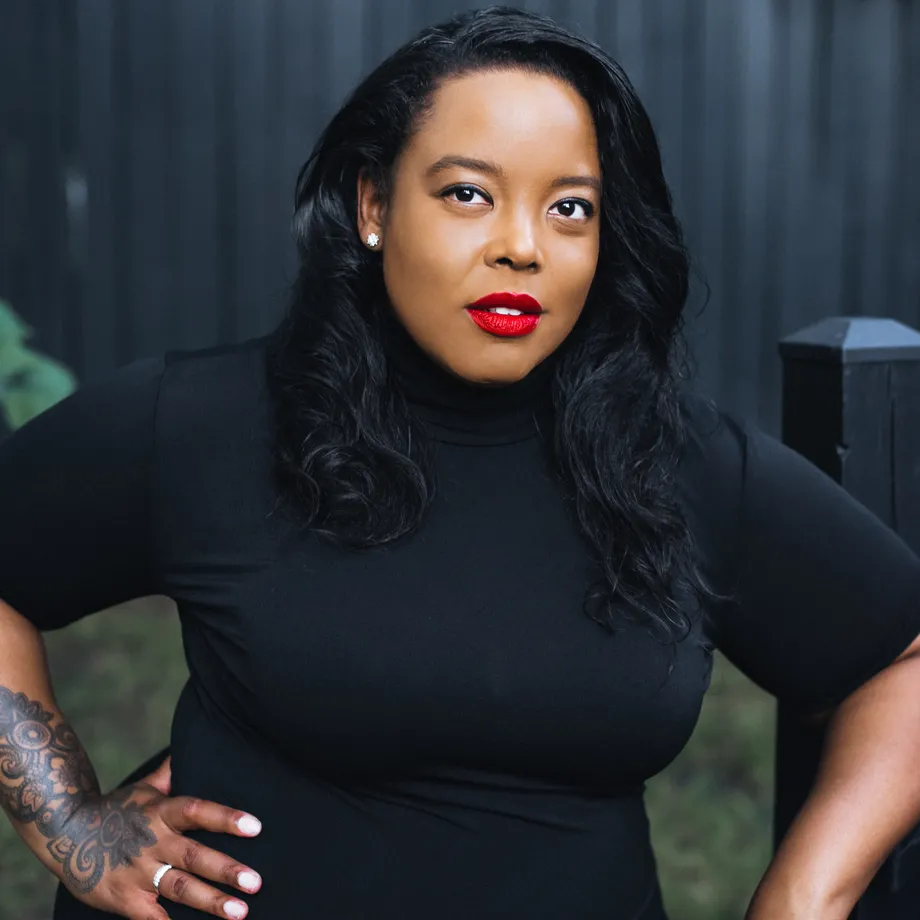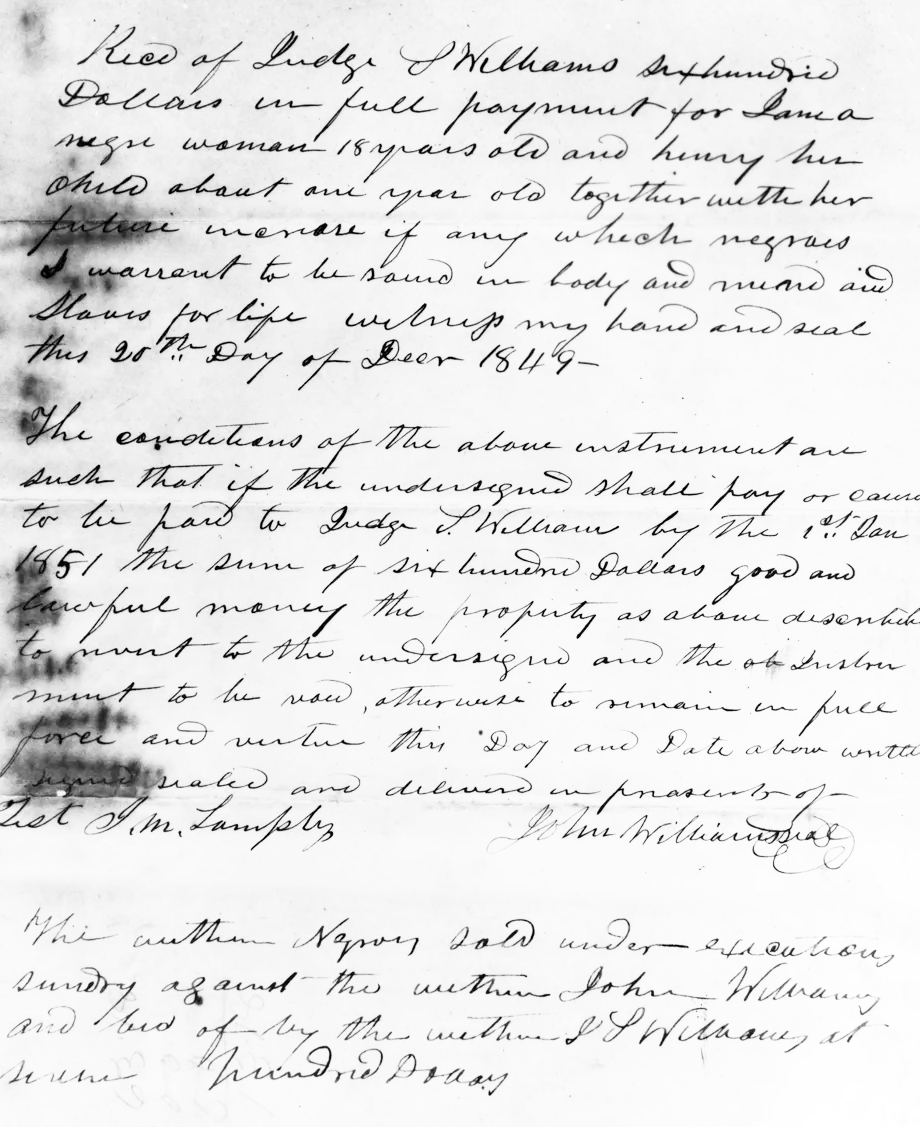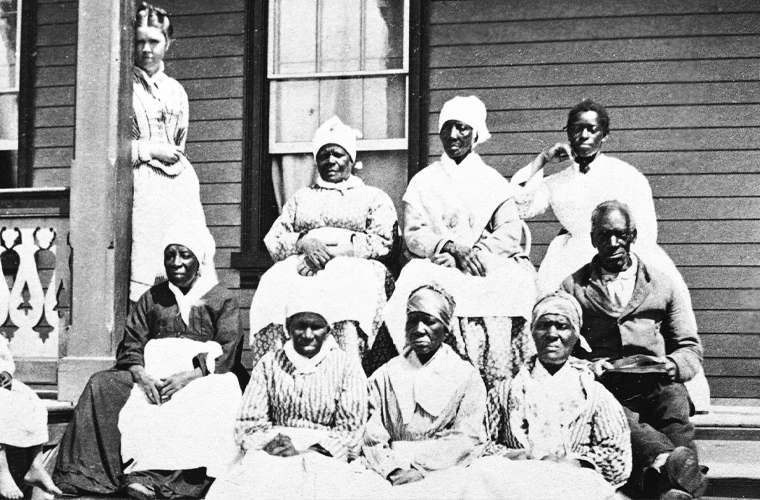White women are sometimes seen as bystanders to slavery. A historian explains why that’s wrong.
In the American South before the Civil War, white women couldn’t vote. They couldn’t hold office. When they married, their property technically belonged to their husbands. But, as historian Stephanie Jones-Rogers notes, there was one thing they could do, just as white men could: They could buy, sell, and own enslaved people.
In her recent book, They Were Her Property: White Women as Slave Owners in the American South, Jones-Rogers makes the case that white women were far from passive bystanders in the business of slavery, as previous historians argued. Rather, they were active participants, shoring up their own economic power through ownership of the enslaved.
In the past, historians had often based their conclusions about white women’s role in slavery on the writings of a small subset of white Southern women. But Jones-Rogers, an associate professor of history at the University of California Berkeley, drew on a different source: interviews with formerly enslaved people conducted during the Great Depression as part of the Federal Writers’ Project, an arm of the Works Progress Administration. These interviews, Jones-Rogers writes, show that white girls were trained in slave ownership, discipline, and mastery sometimes from birth, even being given enslaved people as gifts when they were as young as nine months old.
The result was a deep investment by white women in slavery, and its echoes continue to be felt today. As the New York Times and others commemorate the date, 400 years ago, when enslaved Africans arrived in Virginia, Vox reached out to Jones-Rogers to talk about the history of white, slaveholding women in the South and what that history says about race, gender, wealth, and power in America in 2019. Our conversation has been condensed and edited.
Anna North
Can you talk a little about how this book came about?
Stephanie Jones-Rogers
When I was in graduate school, I was taking all these different courses and reading all these books on African American history but also on women’s and gender history. I was particularly interested in what these two subfields of history had to say about white women’s economic investments in the institution of slavery. What struck me is that they seemed to be in direct contradiction to each other, in many respects.
Those historians who explored the experiences of white Southern women would often argue that while women had access to enslaved people that male kin or their spouses may have owned, they were not directly involved in the buying and selling of enslaved people — particularly married women weren’t.
Conversely, those individuals who explored the enslaving of African Americans would often, in fact, say that a formerly enslaved person talked about having a female owner or talked about being bought or sold by a woman. And so I asked myself, what’s the real story here? Were white women — particularly married white women — economically invested in the institution of slavery? Meaning, did they buy and sell enslaved people?
I looked to traditional sources where we might think to find those answers: a white woman’s diary, a white woman’s letters and correspondence between family members, et cetera. They mentioned very sporadic issues related to answering this question, but there was not this kind of sustained conversation. So, I said, African Americans are talking about this. Formerly enslaved people are talking about this. So, let me look at the interviews that they granted to these Federal Writers in the 1930s and 1940s. And so when I look at those interviews, formerly enslaved people were talking about white women’s economic investments in a variety of ways consistently, constantly, and routinely.

Anna North
The historians you mention who didn’t see white women as economically invested in slavery — what sources were they drawing on and why is there such a disconnect between those sources and the interviews with formerly enslaved people that did really delve into these economic questions?
Stephanie Jones-Rogers
I tried to focus primarily on married slave-owned women in this book, in large part because those are the women who many historians of slaveowners say did not have a direct impact on the economic institution of slavery. And they say that, in large part, because of this legal doctrine called coverture. Essentially, this doctrine says that when a woman who owns property or earns wages, or has any assets, gets married, those assets, those wages, that wealth, immediately becomes her husband’s — their identities are subsumed into one.
Many historians have looked into this legal doctrine of coverture and seen it as all-encompassing. [But] scholars who have made this argument have essentially not examined the voluminous evidence that appeared in the testimonies of formerly enslaved people.
They also looked to a very small subset of women: highly literate, very elite white women who had the time to sit down and jot down their thoughts about the day. And so they’re missing the vast majority of those women who owned slaves.
The vast majority of women who owned slaves owned less than 20. And often, the women that I talk about in the book owned one or two, no more than five. So these are the women that were probably not literate, and if they were literate, they didn’t have enough time to sit down and write down what was going on in their day. The vast majority of the women who owned slaves are missing from the analyses, in large part because they did not leave documents behind to tell us how they felt about these things, to tell us how they were investing in the institution. Formerly enslaved people’s testimonies about these women are, in many respects, the only surviving record to document exactly that.
Anna North
So in looking at those testimonies, what did you find in terms of the roles that white women and girls had in slavery and the way that they formed their identities through their involvement in slavery?
Stephanie Jones-Rogers
What I thought was really interesting as I read much of the scholarship on white slave-owning women is that so much of it starts when women are adults. One really wonderful thing about the interviews of formerly enslaved people is they talk about white girls. They talk about white infants, female infants, and female adolescents. So we are allowed into several phases of white female life through these interviews that have heretofore been obscured or kind of left out of the picture. I decided, in order for the second half of this story, the story of women, to make sense, I have to start the story at the very beginning, in the early years.
So I start the book by talking about how white slave-holding parents trained their daughters how to be slaveowners. They give them lessons in slave discipline and slave management. Some even allow their daughters to meet physical punishments. Slave-holding parents and slave-holding family members gave girls enslaved people as gifts — for Christmas sometimes, when they turned 16 or when they turned 21. There are even accounts of slave-holding parents and family members giving white female infants enslaved people as their own. There is one particular instance of a case, in a court record, where a woman talks about how her grandfather gave her an enslaved person as her own when she was 9 months old.
When you think about the fact that their relationship to slavery, to slave ownership, in particular, begins in infancy, in girlhood, what you begin to realize is that their very identities as white girls, as white Southerners, as white women, are intricately tied to not only ownership of enslaved people but also the control of enslaved people, the management of enslaved people. The other really important lesson that their parents, their family members, and even their girlfriends, cousins, female cousins, and so forth are also teaching them along the way is that the way the law is set up, you have this property. And when you get married, it will, if we don’t do anything about it, become your husband’s. And, if he is a loser, you’re going to lose. So, they essentially say, we have to make sure that does not happen.
So before these young women get married, their parents and sometimes female kin and friends will encourage them to develop legal instruments, and protective measures to ensure that they don’t lose all of their property to their husbands. These legal instruments that they develop are very much like prenuptial agreements today. They’re called marriage settlements back then, or marital contracts, which essentially detail not only what property they’re bringing into the marriage but what kind of control their husbands can or cannot have over it.
These women are not stupid. They’re like, I’m about to get married, the law says that everything I have is going to be my husband’s. I don’t want that to happen. What can I do to prevent that from happening? They are prepared, they are knowledgeable, and they work with parents and others who are willing to assist them to develop protective measures to ensure that the relinquishment of all of their property wealth, and assets don’t happen once they get married.
Anna North
Going along with that, can you talk about the ways in which slavery benefited white women and girls, both economically and socially?
Stephanie Jones-Rogers
Women cannot do many of the things that men can do in this period of time. One thing that they are allowed to do by law, and this is particularly the case in the South, is invest in slavery. And that’s exactly what they do. Not only do they inherit enslaved people, but they also go into slave markets. They buy enslaved people. They’ll hire them out and they’ll collect their wages. Then they use those wages to buy more slaves.
They open businesses, and they employ those enslaved people in their businesses, those businesses make a profit, and they use those profits to buy more slaves. So they are investing in the institution of slavery in the same ways as white men are. The other really interesting thing that I observed in the interviews with formerly enslaved people is that white women often owned twice as many female slaves as they did male slaves. When I would talk about this with scholars in the field, some of them would remark, “Oh, that makes sense, because if women are in the house, they need more female help.”
I said, “Okay, yes, that would be practical,” but what has also been important to recognize is that these women understood the law. There are laws on the books, during this period that ensure whenever a person owns an enslaved woman if that woman gave birth, that person also legally owned her children. And so owning an enslaved woman means that you’re not only reaping the benefits of this woman’s productive labor but also her reproductive labor.
Anna North
Was that true of white men, too? Did they have more female than male slaves?
Stephanie Jones-Rogers
Much of what I’m describing was also true for white boys and white men. [But] during this period of time, there was the development of the domestic slave trade, which essentially was the purchase of enslaved people in the upper South, in places like Virginia and Maryland, and then their transport into the lower South and into the Southwest when the country expanded during the 1800s.
In these sales, if an enslaved woman had a child, that child was seen as a liability to the slave trader. There are accounts that I talk about in the book where these slave traders are willing to just toss away the baby. But, there was this white woman in one particular case who would go to state auctions, and if there were babies there that were not sold along with the mother, she would ask for those babies to be given to her. She would keep the babies for free. In those respects, there were instances in which white men saw enslaved children as liabilities, and white women saw them as long-term investments.

Anna North
You talk in the book about how white women were able to achieve economic and social empowerment through ownership of enslaved people, essentially gaining some status in a patriarchal society through dominance over black people. I’m curious if we see echoes of this today when we look at white women gaining economic empowerment under capitalism.
Stephanie Jones-Rogers
There is a certain kind of power that comes with wealth. Enslaved people were wealthy, their bodies held value in a real market, within a capitalist market. White women understood it.
But in order to sustain this system, white men realize that white women must be a part of that system. They must support it, they must see the value in it for themselves, not simply for their husbands or their children. They need to understand that this system benefits them personally and directly. The only way they can do that is to allow them to invest in the system and participate in the system.
And they are, in fact, investing in this system; they participate in the system. They benefit from this system, in every single way that white men do. And that is key to the longevity of, the perpetuation of the system. I think that is the same for capitalism — when you tell a woman, “You might not make as much as a man for doing the same work, but if you can get your hands on these funds, nobody can deny you.”
Slavery was a regime based on human bondage, [but] it was also an economic regime, one that was funding the national economy. When those white women are invested, it’s not very different from them being invested in capitalism today. It’s just a different commodity. It’s just a different source of wealth.
Anna North
In thinking about the 1619 commemoration, I was thinking about the part of your book where you look at the way white women wrote about slavery after emancipation. In your epilogue, you write that they portrayed themselves as “forever sacrificing women who had played purely benevolent roles within a nurturing system.” And you quote a white woman who wrote that maybe the descendants of enslaved people should even consider creating an “anniversary to celebrate ‘the landing of their fathers on the shores of America,’ when they were bought and domiciled in American homes.” Can you talk a little bit about how white women remembered their role in slavery after the fact and how we actually ought to remember it today?
Stephanie Jones-Rogers
When I think about that part of the book, I also think about what is happening today. The erasure of certain elements of horror and the darkness of [white women’s] investment and involvement in the history of slavery are very much why we’re shocked to see the way that some white women respond to interactions with black people today. You can also see that in the “send her back” chants — the idea that black people have never been citizens and they never belonged.
I think there are parallels between what this woman said in the early 1900s and what white women are saying today about African-descended people, whether they be congresswomen or just average black folk on the street. It’s very much like, you should be grateful because you’re here now and stop complaining because look what we’ve done for you. I think there are many parallels between that kind of language now and the argument that she made back in the early 1900s.

